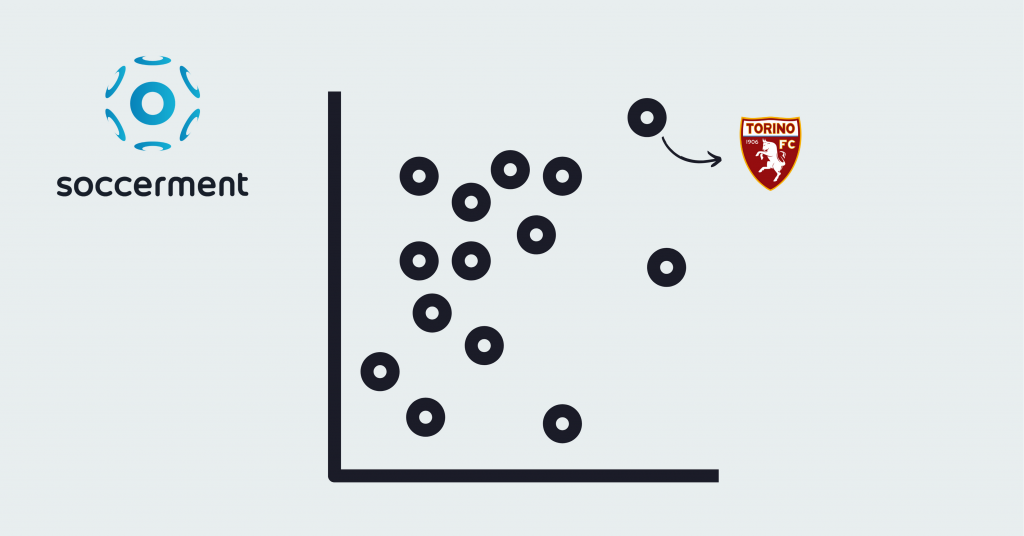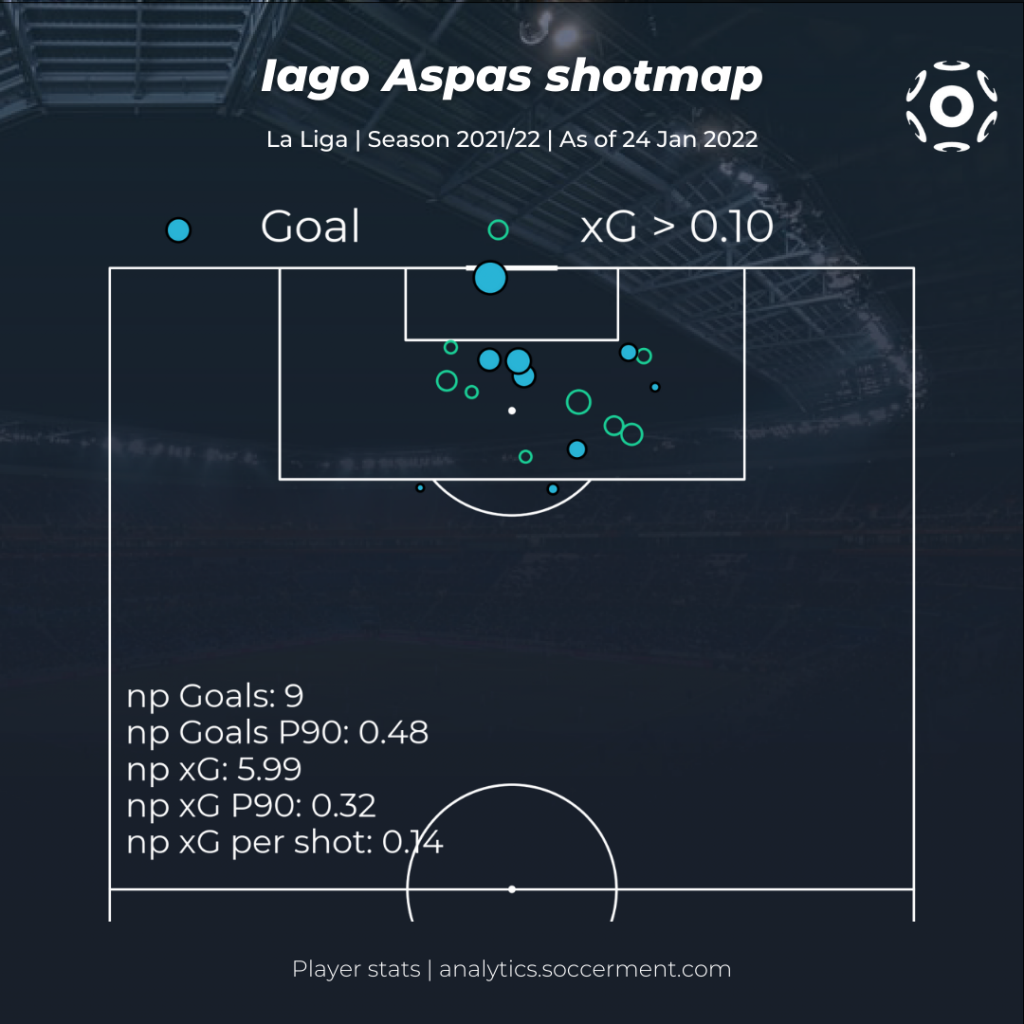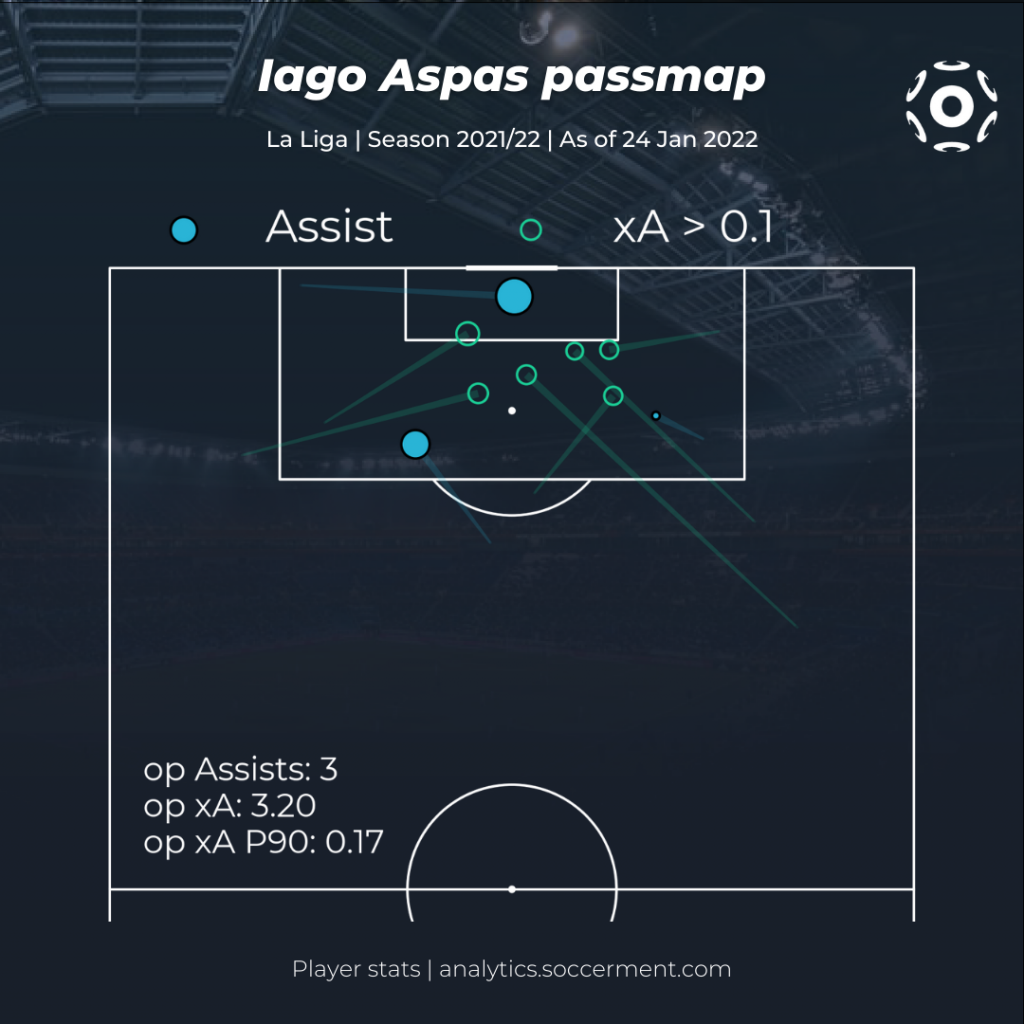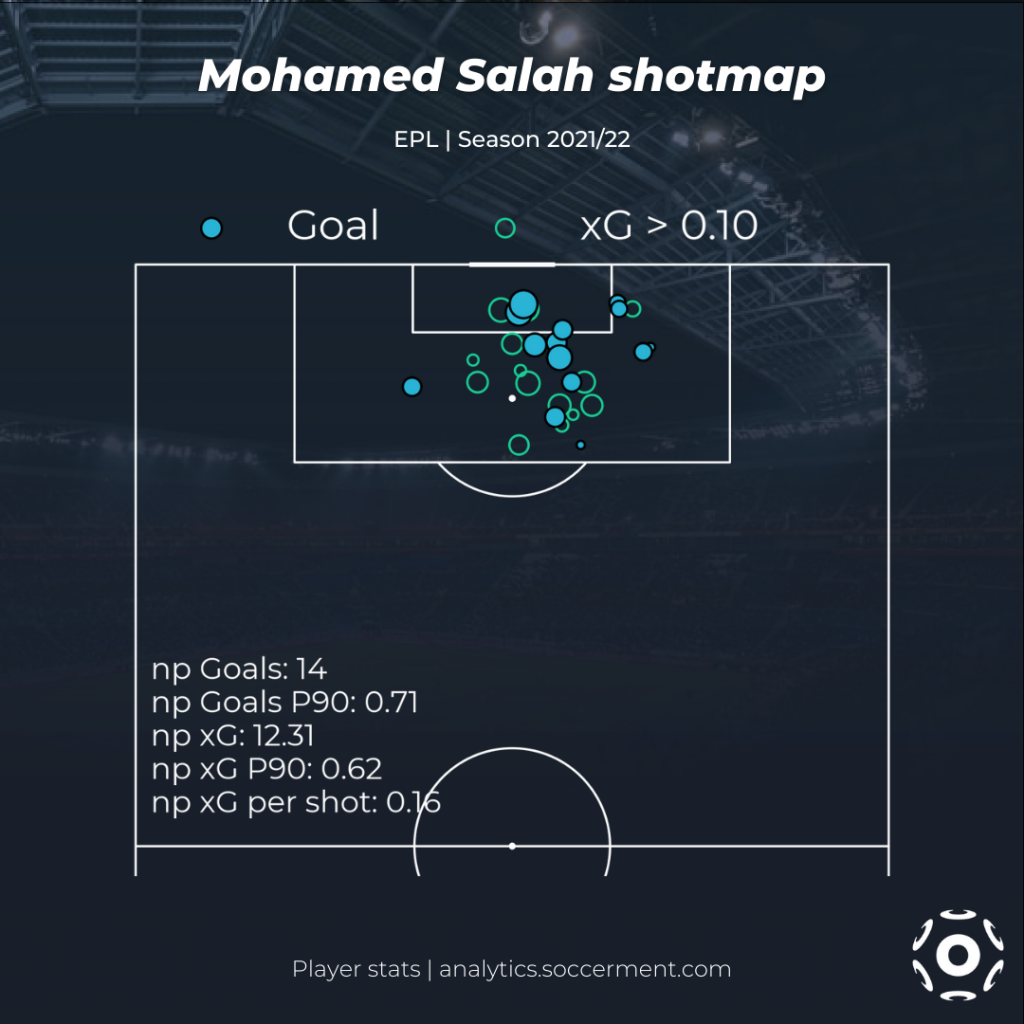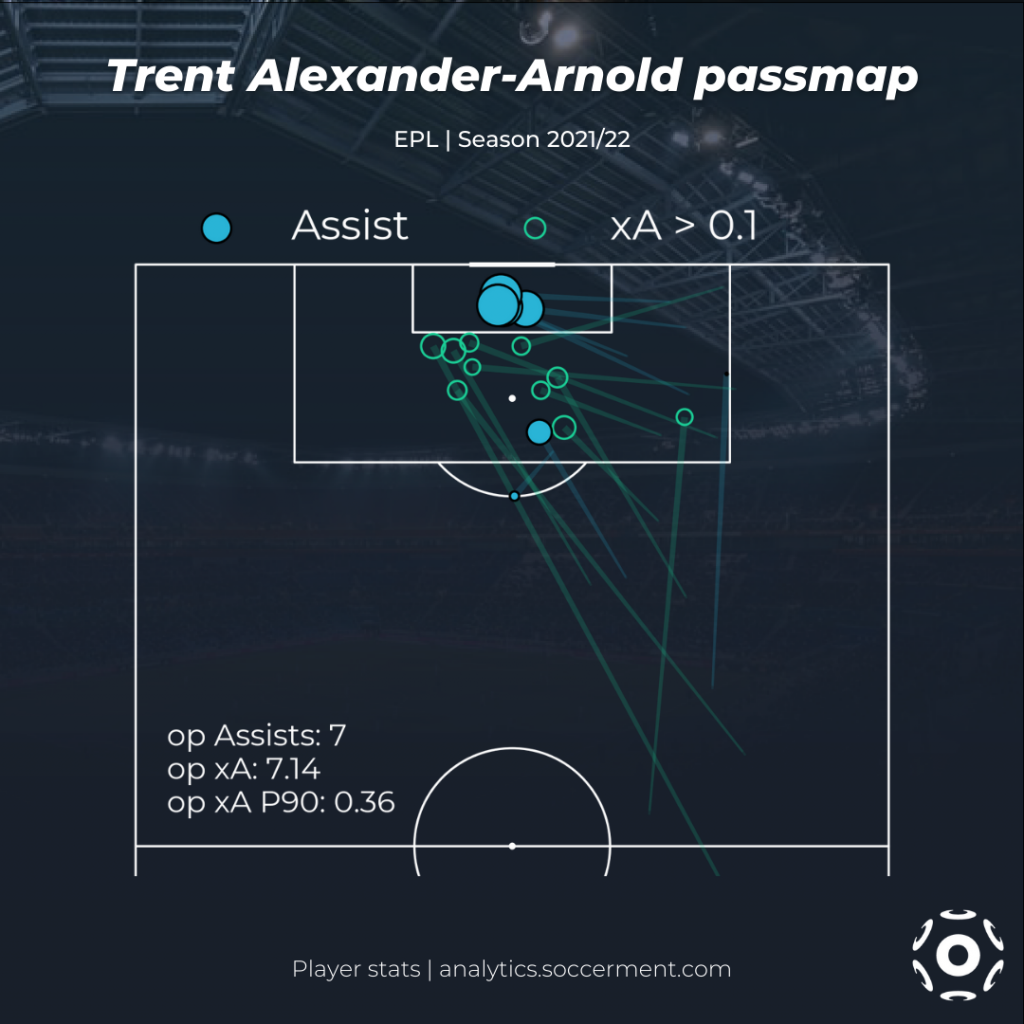Pressing is a fundamental part of many teams’ game plan in modern football. At the same time, it is difficult to measure it accurately using event data. While PPDA is certainly a very useful metric, in our view it would be advisable to complement it with different, indirect measurements of how teams are able to prevent their opponents from building up dangerous actions and progressing the ball up the pitch. To fill this gap, we introduce a new metric called Buildup Disruption Percentage, or BDP, which quantifies the destructive effect of pressing on the opponent’s pass completion rate. In the current season, the top five clubs in the Top 5 Leagues on BDP are Torino, Hellas Verona, FC Köln, Celta Vigo and – unsurprisingly – Klopp’s Liverpool.
Note: Updated on 31st January 2022 – Scroll to the bottom
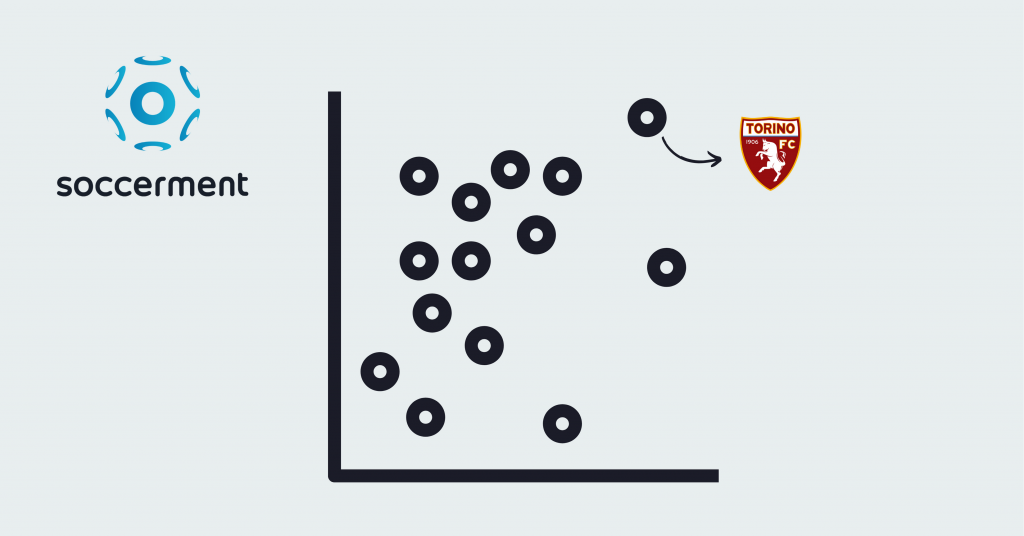
Introduction: how do we calculate BDP?
It is difficult to measure pressing accurately using event data, which only tracks on-ball events, since pressing is mainly an off-ball action, which sometimes results in an attempted defensive action on the ball, but not always.
Existing metrics, such as PPDA (Passes Per Defensive Action), already provide a useful and well-tested tool in measuring pressure. However, given the challenges outlined above, it would be advisable to complement it with different, indirect measurements of how teams are able to prevent their opponents from building up dangerous actions and progressing the ball up the pitch, as suggested by Italy’s Head of Match Analysis, Antonio Gagliardi (Twitter Profile).
To fill this gap, we introduce a new metric called Buildup Disruption Percentage, or “BDP”, which quantifies the destructive effect of pressing on the opponent’s pass completion rate.
The concept behind this new metric is quite simple. If a team executing aggressive pressing is successful, we should expect their opponents to be able to complete fewer passes than they normally would, due to the disruptive action of the opposition press. By computing the team’s pass completion rate for each match, we can compare it with the team’s average rate, and compute a percentage difference. If we then switch the point of view and look at the opposing team, average these differences weighting them by the opponent’s average pass accuracy and change the sign, this tells us how successful their pressing is in disrupting their opponents’ buildup phase. We therefore refer to this quantity as Buildup Disruption Percentage, or BDP. Note that we switched the sign of the metric, since it is assigned to the pressing team, so that positive BDP values indicate aggressive and effective pressing, while negative values indicate a lack of pressure or ineffective pressing.
There are some caveats to consider when reading BDP. Naturally, there are other factors besides the opponent team’s pressing which may lead a team to have a lower (or higher) pass completion rate in a specific match, such as player availability, due to injuries and suspensions, athletic form and psychological momentum. These additional variables surely introduce some additional variance in the BDP, but by taking the average across all matches played, they should even out as the number of matches increases.
This new metric is a good example of how we can go around the limitations of event data to recover off-the-ball information without tracking data, by making an indirect measurement.
Which teams have the most disruptive pressing in Europe?
If we apply this model to all teams in the top 5 European leagues, we find some surprising results at the top of the ranking. The team with the most destructive pressing is Torino (10.8%), followed by fellow Serie A club Verona (10.5%), and FC Köln (10.1%). The highest ranking top team is Liverpool (8.7%) in 5th place, with well-known pressing teams such as Marcelo Bielsa’s Leeds (7.7%), Atalanta (6.9%) and RB Leipzig (6.8%) also figuring in the top 10.
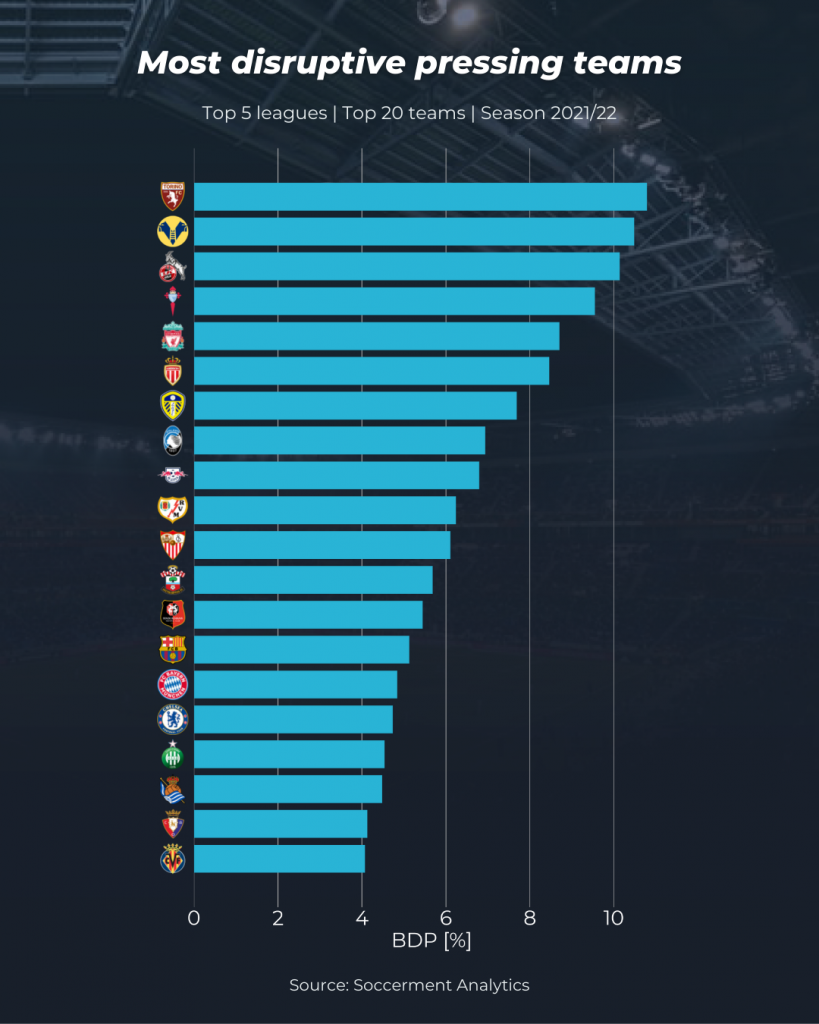
We can compare BDP with PPDA, with the caveat that we should consider BDP only in the pressing team’s opponents’ half, since PPDA is computed using events in the highest 40% of the pitch. Conceptually, since PPDA takes into account passes and defensive events regardless of their outcome, it mostly focuses on pressing intent rather than its outcome. In this sense, by measuring indirectly the effect of pressing on the opponent team’s buildup, BDP is more geared towards measuring pressing success.
The relationship between the two metrics is shown in the scatterplot below. As expected, there is a well-defined anti-correlation between BDP and PPDA (smaller values of the latter indicate more pressing). The dispersion in BDP for the same PPDA value is a measure of how successful a team’s pressing is compared to their effort.
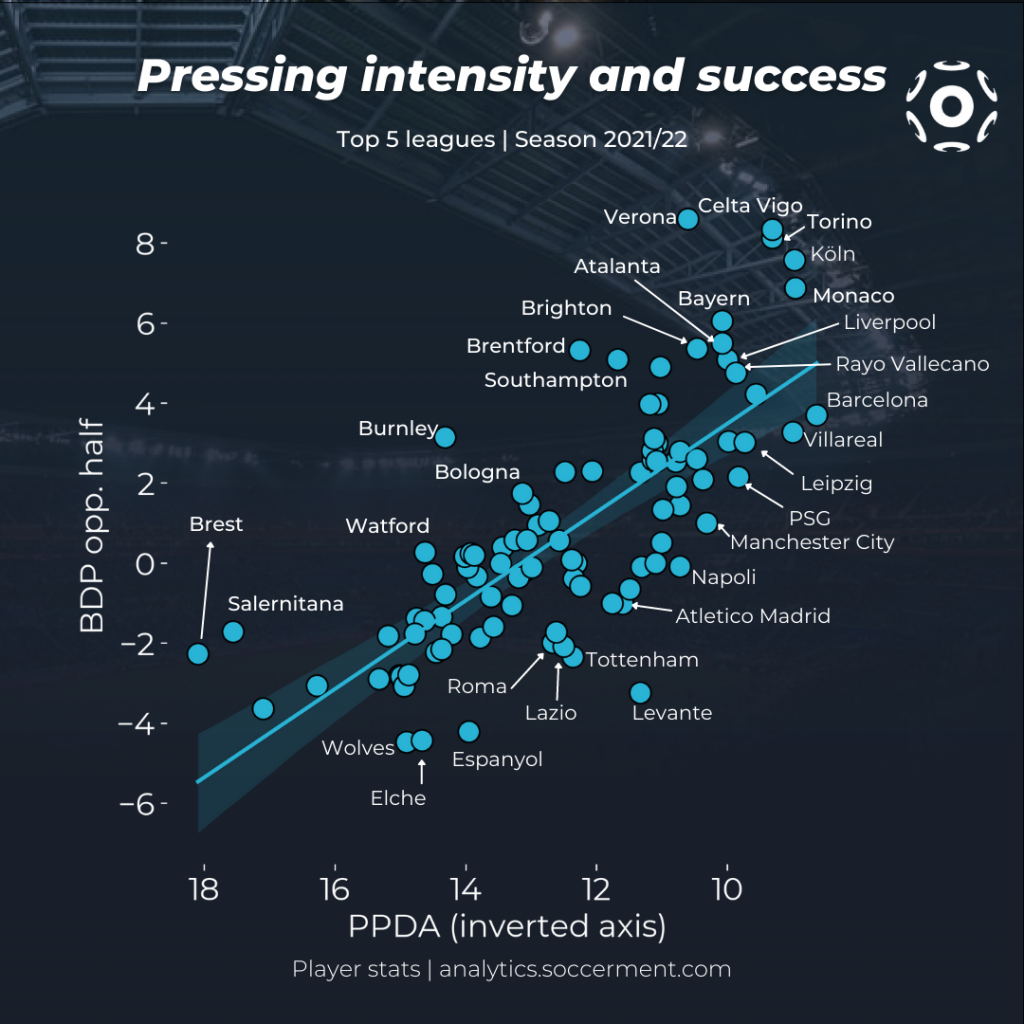
We can see that the top five teams for general BDP significantly outperform the linear relationship with PPDA. This could have two main interpretations: these teams’ pressing is particularly efficient, and/or a significant part of the pressing workload is given by careful positioning off the ball, without resulting in explicit defensive events which PPDA is sensitive to. Verona’s BDP numbers are especially noteworthy: Tudor’s team has a similar PPDA to Manchester City, but while the EPL champions have a BDP in the attacking half of 1.0%, the Italians record the highest value with 8.6%.
It is also interesting to look at the relationship between BDP and fouls made per game: this is shown in the scatterplot below. While one might expect to see a correlation between the two, this is actually not the case. The most disruptive pressers, Torino, also commit the most fouls per game, but this does not extend into a global correlation for the rest of the teams. This is exemplified by teams such as Bayern, Manchester City and Chelsea, who are in the top half of the distribution for BDP, but find themselves at the low end of the distribution for fouls per game. Furthermore, some teams show an opposite trend, with a high number of fouls per game but low BDP: this is the case for Valencia, Getafe and Levante, among others.
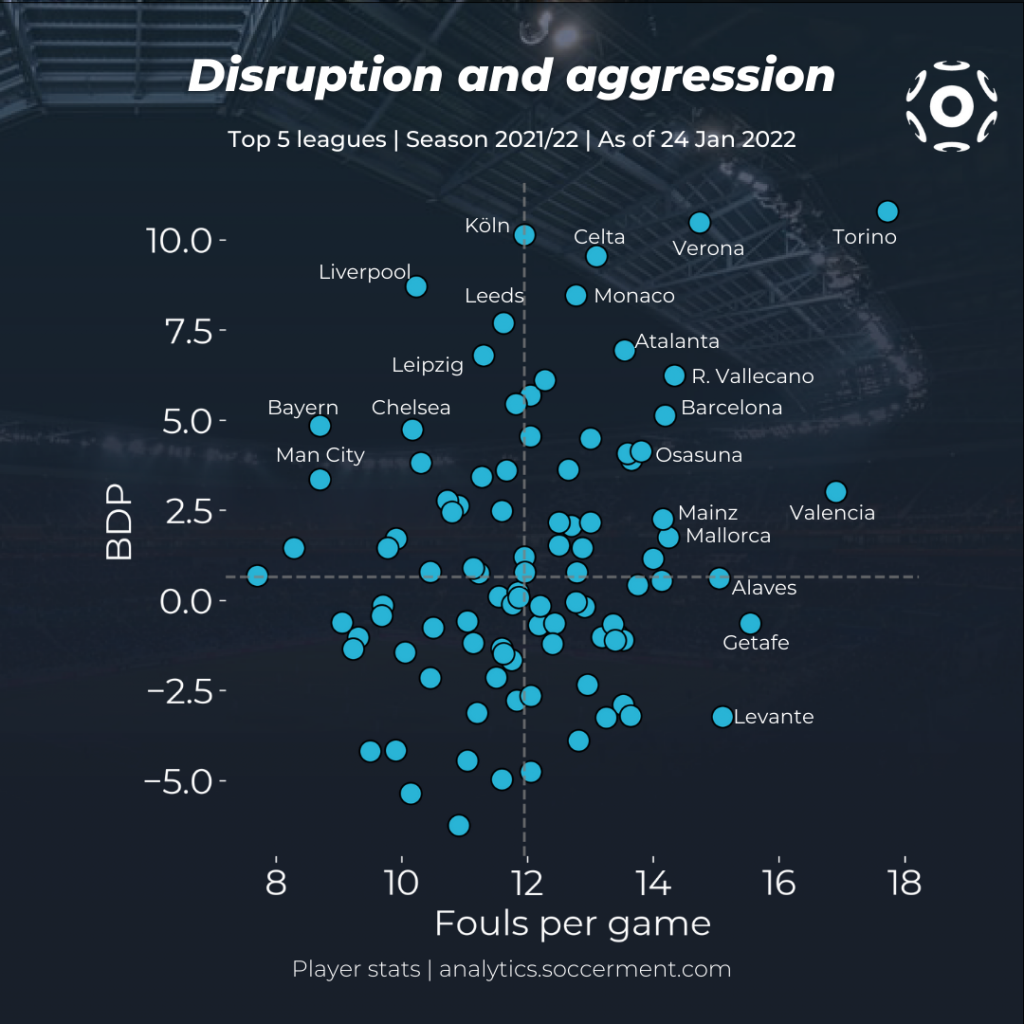
Team focus
In the following we provide a brief summary overview of the five teams with the most disruptive pressing in elite football: Torino, Verona, FC Köln, Celta Vigo and Liverpool.
Torino
The Granata have experienced one of the most successful manager changes in Serie A in recent years, ranking as the most improved team in the league for Expected Goals difference (xGD) per match at the halfway point of the league (+0.85) compared to the same point of last season. New coach Ivan Juric has directed his team towards an extremely aggressive pressing style, as certified by their PPDA of 9.31 (lowest in the league) and by a staggering 17.8 fouls per match, the highest in the top 5 leagues.
After a stuttering start, their new approach is now bearing fruit, with Torino ranking 10th in the league, 15 points clear of the relegation zone, while still reaping fewer points than they would have deserved to, based on our Expected Points model (32 points vs. 36.54), which would see them rank 7th overall. The new course has also brought remarkably high levels of territorial dominance, with a field tilt of 58.2% (5th in the league).
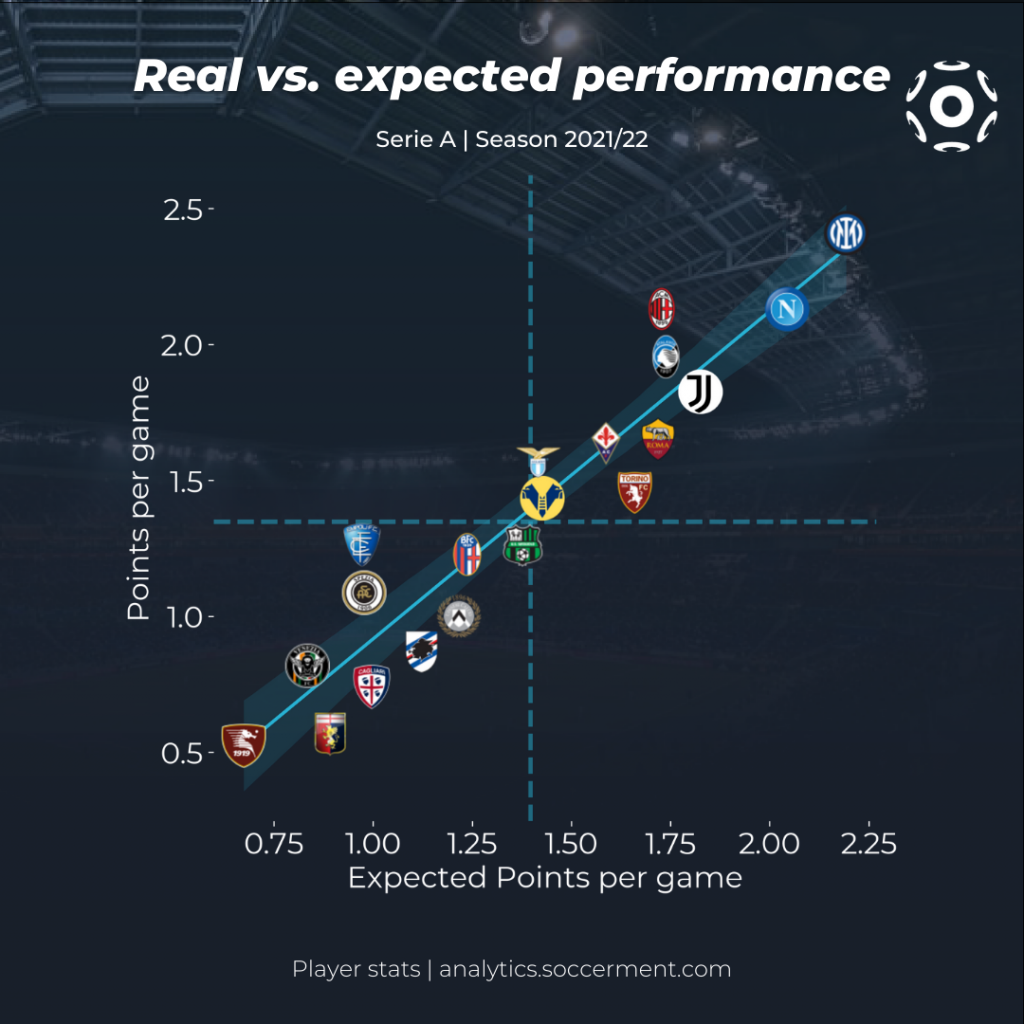
At the individual player level, Gelson Bremer has been key in keeping Torino the third best defence in Serie A (21 goals conceded) and third best for xGA (20.5), with the Brazilian ranking first by far in Serie A for Soccerment's Defending Index. Up front, in the absence of star striker "il Gallo" Belotti, Antonio Sanabria is having a good season in terms of scoring chances, with 0.48 open-play xG P90 (7th overall), but is registering a significant underperformance, with only 0.31 goals scored P90, resulting in a somewhat poor tally of five goals. Midfielder Dennis Praet is also performing remarkably well, ranking 6th for open-play xA P90 (0.23).
Verona
The fact that Hellas Verona rank second right after Torino for the most destructive pressing in Europe is no coincidence, considering that coach Igor Tudor is following the same principles as his predecessor, current Torino manager Ivan Juric. Tudor has been successfully building upon Juric's work, managing a slight improvement in xGD per match at the halfway point of the season compared to 2020/21, employing similarly aggressive tactics: with 14.7 fouls P90 Verona rank second in Serie A right behind Torino, and 6th in the top 5 European leagues.
There are, however, some differences between the pressing stats of Verona and Torino. As mentioned above, the 'Scaligeri' record a much higher BDP than would be expected from their PPDA (10.61, 6th in Serie A), especially in the opponent half, meaning they require fewer explicit defensive actions in order to disrupt their opponents' buildup. Furthermore, Verona ranks eighth for field tilt (53.8%), meaning they enjoy a significantly lower degree of territorial dominance compared to Torino.
Verona currently ranks 9th in the league table, one point (33) above Torino, in line with their expected output (32.83 xPts). One of the factors which have allowed Tudor's team to reach the top half of the table has certainly been the extraordinary scoring form of Giovanni Simeone. With 0.72 open-play goals P90, the Argentine ranks second for total goals scored (12), but his scoring chances should have resulted in about half this output, with 0.37 open-play xG P90. Such an overperformance is most likely not sustainable throughout the season, but is remarkable nonetheless, and has helped Verona become the 5th best attack of the league (43 goals) and the 4th team for goal conversion rate. Gianluca Caprari is also having a successful season, with 13 goal involvements (8 goals and 5 assists): the Italian is the only forward in Serie A with more open-play xA (0.21 P90, 9th overall) than xG (0.20 P90). Another player worth mentioning is Serbian winger Darko Lazovic, ranking 4th in Serie A for xT (0.17 P90) and 2nd for xT from passes (0.13 P90), making him a key contributor for ball progression. Antonin Barak is also having a season to remember, ranking second for open-play goals and xG among midfielders (0.47 and 0.30 P90, respectively), and 8th for xOVA (0.27 P90).
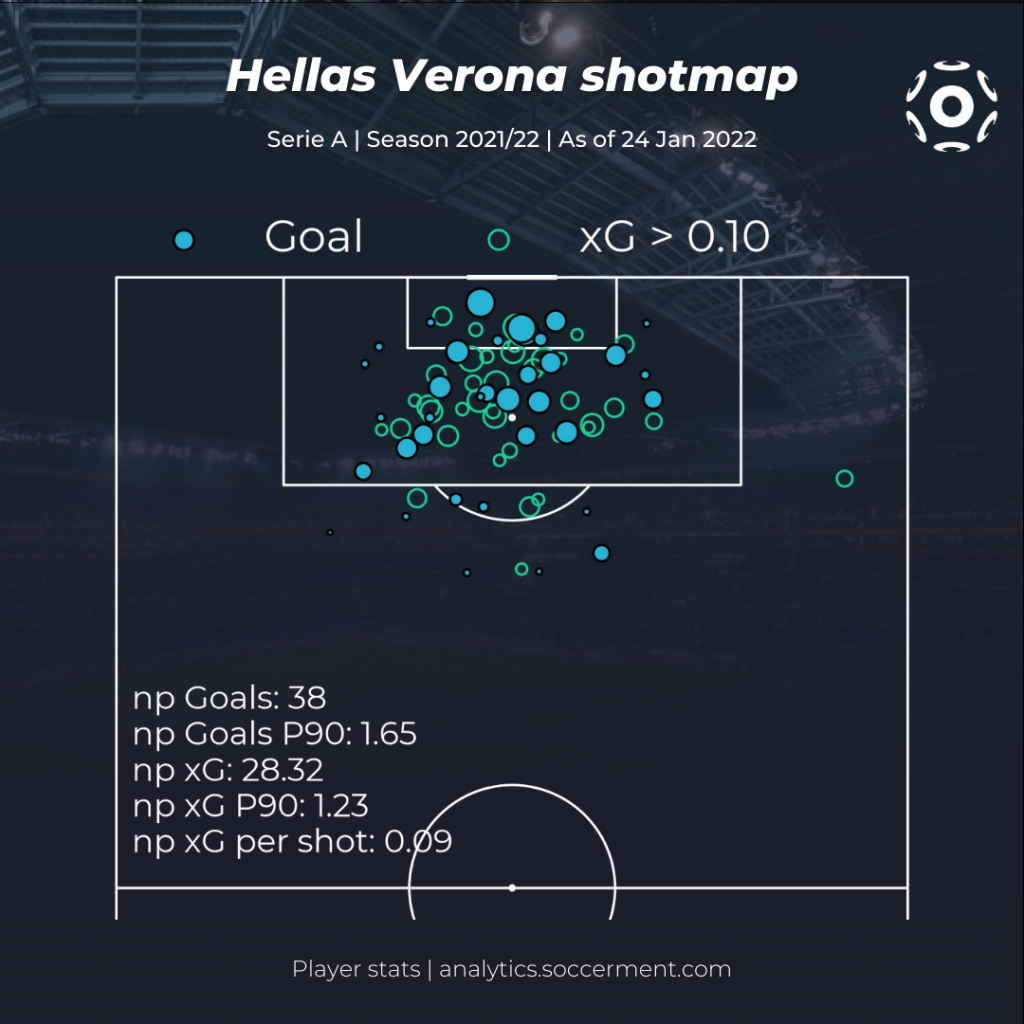
FC Köln
The Rheinland team has been revitalized by new coach Steffen Baumgart. They are the 5th most improved team in xGD per match compared to the same point of last season (+0.39). The improvement is driven entirely by offensive production, with xG rising from 1.05 to 1.51 per match, and xG against (xGA) worsening slightly from 1.56 to 1.63 per match. This is in line with Baumgart's goal for the team's play style, since the German has made clear that his brand of football is more about scoring one goal more than the opponent rather than conceding one fewer. Their third place in the BDP ranking is reflected into the lowest PPDA in Bundesliga (8.98), and third lowest in Europe, after Barcelona (8.63) and Monaco (8.96). Unlike Torino or Verona, their aggressiveness does not necessarily translate into more fouls, with FC Köln ranking only 9th for fouls per game.
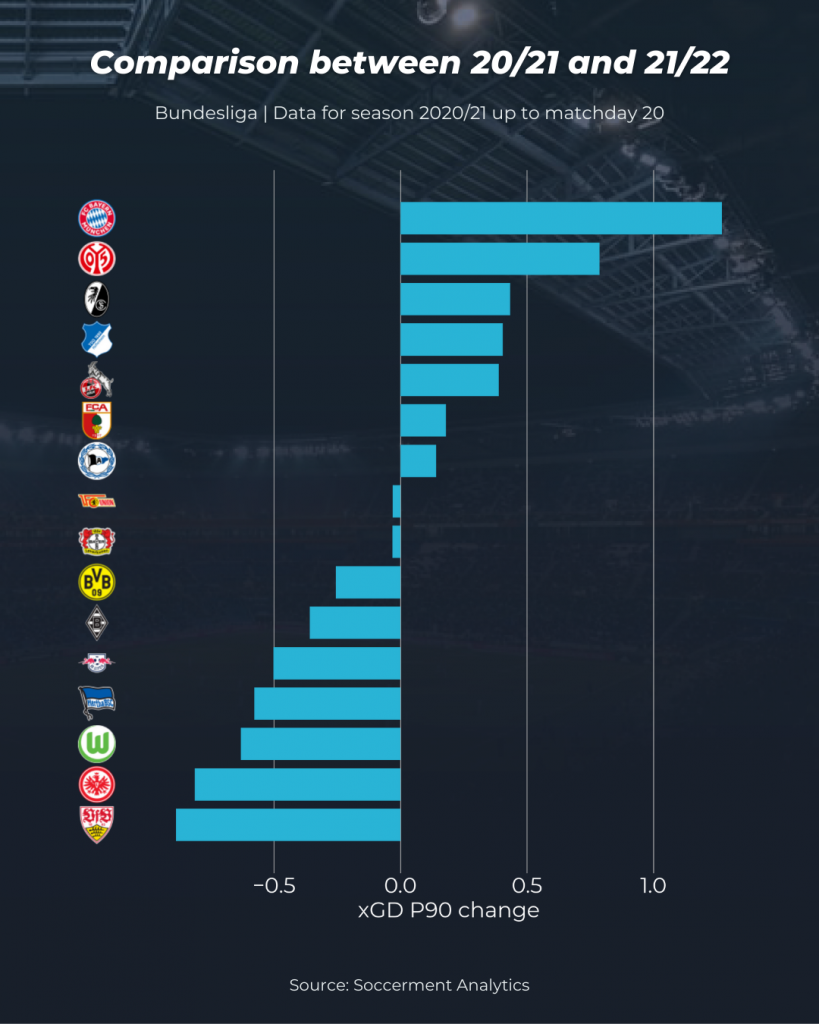
This improvement has brought the team from the relegation zone up to the top half of the league table (8th place with 29 points), a result which appears mostly in line with the team's performance as measured by our Expected Points model (10th place with 27.42 xPts).
In terms of individual players, Baumgart has been able to give new life to the career of 31-year-old striker Anthony Modeste. After returning from a goal-less six-month loan spell at St. Etienne, the Frenchman is having possibly the best season in his career, ranking 6th in the Bundesliga for open-play xG P90 (0.59), 5th for open-play goals P90 (0.73), and 4th for total goals (13). Modeste has formed a valuable striker partnership with new signing Mark Uth (10th in the league for xA P90 with 0.28), as well as winger Florian Kainz (0.25 xA P90). At the back, full-backs Jonas Hector and Benno Schmitz are also performing admirably, as testified by their rankings among Bundesliga FBs: 5th and 6th for open-play xA, 10th and 7th for xOVA, 10th and 8th for xT, respectively.
Celta Vigo
The Galician team is the only one in the top four teams for BDP in Europe who didn't change their coach this season. In fact, the aggressive pressing style executed by Eduardo Coudet's men this season (PPDA of 9.31, third lowest in La Liga) is a continuation of what we have seen in the last campaign (PPDA of 8.91 in 2020/21, lowest in the league). Like FC Köln, Celta have been able to couple such remarkable pressing numbers with a relatively clean disciplinary record, ranking only 11th in La Liga for fouls (13.1 per game).
Coudet's team currently ranks 12th in the league table, earning fewer points than they should have according to xPoints (27 points vs. 29.61 xPts). The Galicians are keen to play with the ball, outperforming their table ranking with a 6th place for passes per game (475), possession percentage (55%), and territorial dominance (field tilt 53.4%).
At the player level, striker Santi Mina is producing and finishing a high volume of scoring chances, with 0.39 open-play xG P90 resulting in exactly 0.39 goals P90, which see him ranking 7th in the former and 16th in the latter. Fellow striker and captain Iago Aspas has fared better compared to expectations, as usual, ranking 9th for open-play goals P90 (0.48) from 0.31 opxG P90, for a total of 11 goals which see him ranking 5th overall in La Liga. The Celta captain also ranks 10th in the league for open-play xA P90 (0.17) and 9th for xOVA P90 (0.31). Full-back Javi Galan is also having a good season, providing an important contribution to ball progression with 1.75 progressive ball carries P90, the 5th highest in La Liga among FBs.
Liverpool
The Reds need no introduction, being recognized by many as one of the best teams in Europe. With Jurgen Klopp, they were the first team in recent years to succeed with a game plan heavily focused on gegenpressing, garnering the attention of the football world by applying those concepts with such aggression and relentlessness to the point of becoming an inspiration for many. This season is no different, with Liverpool ranking 2nd for lowest PPDA (10) behind Leeds who also are well-known for adopting a very high intensity style wanted by Bielsa (9.56). On the other hand, Liverpool are the team with the fewest fouls per game (10.2) among the top five teams for BDP, which is to be expected given the superior level and technical quality of the team compared to the other four.
In this season, the Reds have been the only team able to (somewhat) keep up with table leaders Manchester City, and their second place is fully justified by their performance. In fact, they should have picked up a few more points than they did based on the scoring chances created and allowed so far, according to our xPts model.
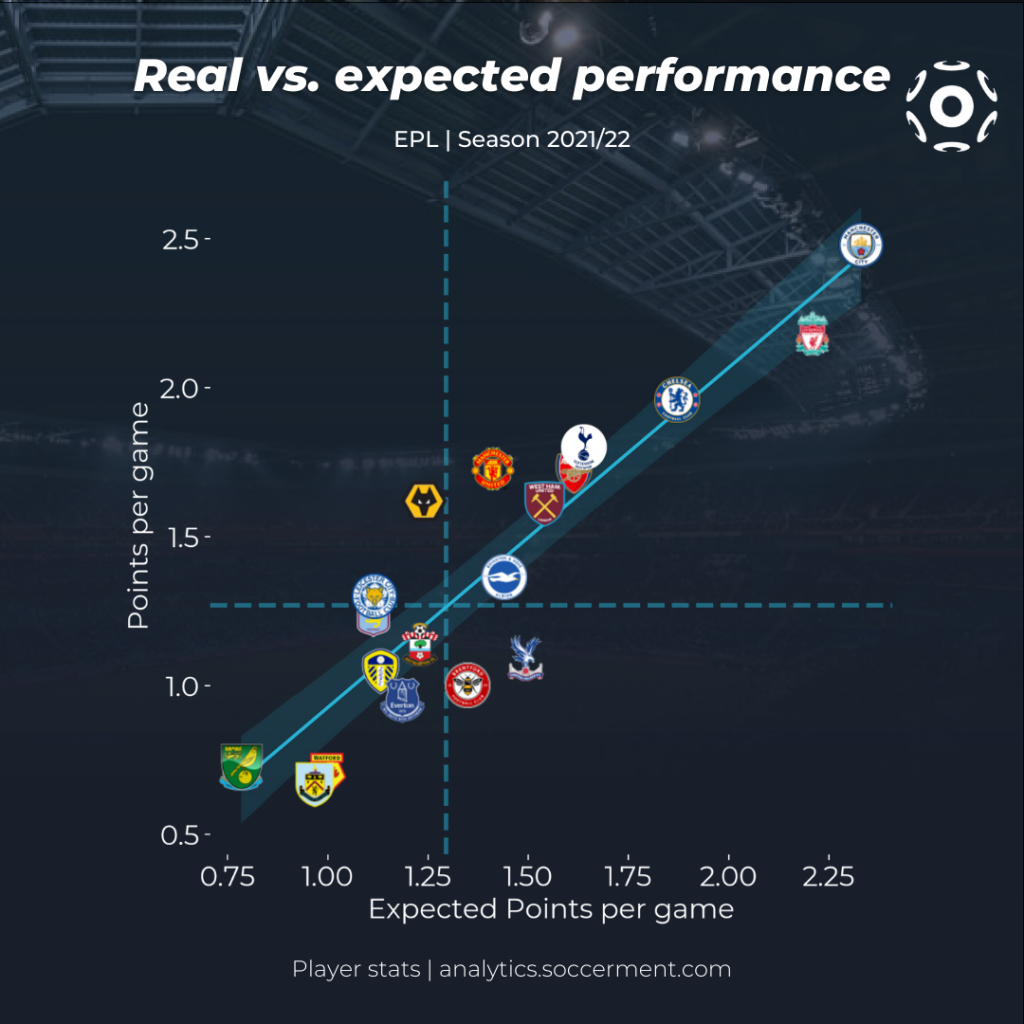
Looking to single out a few key players, it is impossible not to mention that Mohamed Salah is having another phenomenal season, ranking first in the EPL for goals (0.81 P90), as well as xOVA (0.51 P90), second for open-play xG (0.62 P90, behind teammate Diogo Jota with 0.67), and 6th for open-play xA (0.21 P90).
Another obvious gem in the Liverpool squad is Trent Alexander-Arnold: the young Englishman ranks first in the EPL for open-play xA (0.36 P90) and xT (0.26 P90), and fourth for xOVA (0.37 P90), all while playing (at least nominally) as full-back.
31 Jan 2022 update ↓ #update
Since publishing this post, we have received a lot of feedback from the fast-growing football analytics community and we are very happy that the community found it interesting.
One of the question that arose the most was related to the areas of the pitch taken in consideration for the calculation of the metrics. This led us to reconsider the initial idea of using the whole pitch to calculate it.
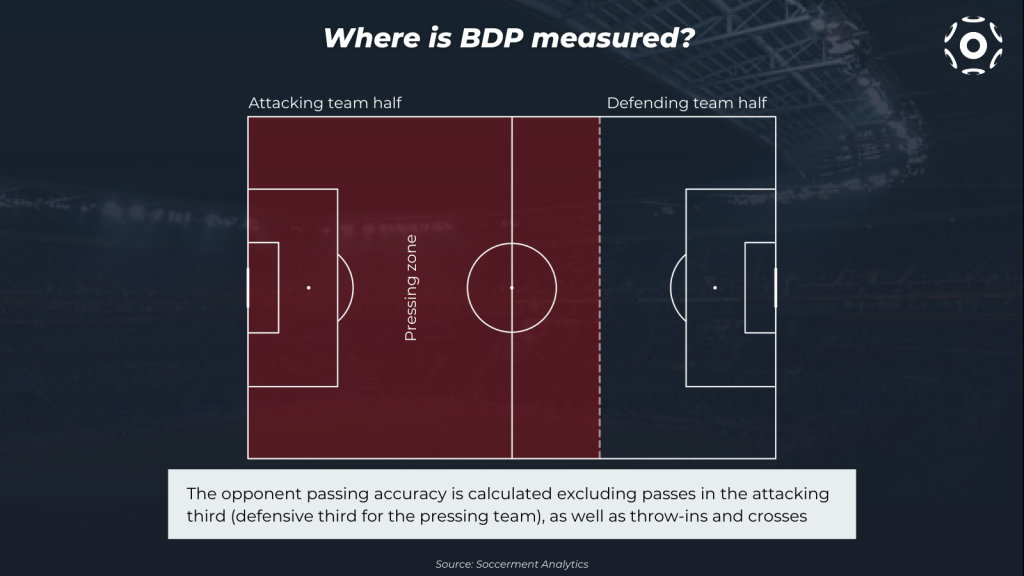
As we try to offer a better understanding of how effective pressing actions are, we are therefore focusing on two thirds of the pitch, excluding from the calculation the opposing team's offensive third. In that area, the defending team is not pressing, they are defending.
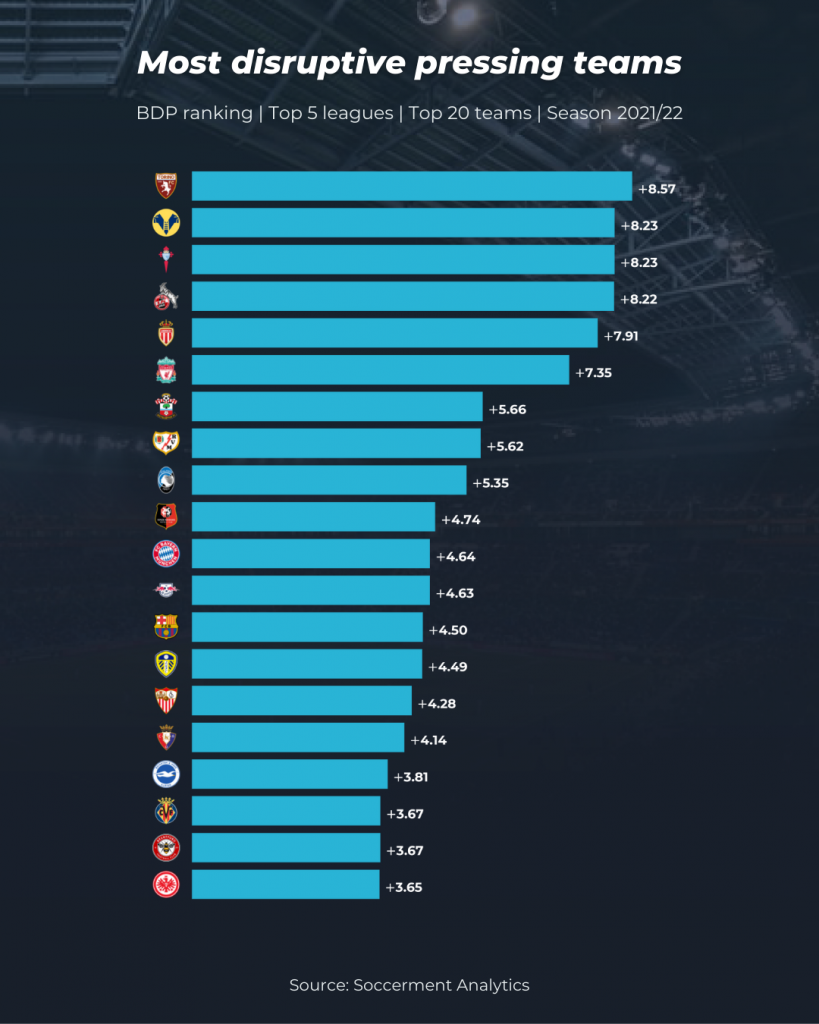
In terms of the effects that this calculation change brings onto the overall ranking in the top 5 leagues, we note that the major effect is that Liverpool drop from the top 5, replaced by AS Monaco. Serie A's Torino and Verona remain the top two sides.
For any query, suggestion or comment, you could send us an email: research@soccerment.com.
And please, follow us on Twitter: https://twitter.com/Soccerment_Blog

